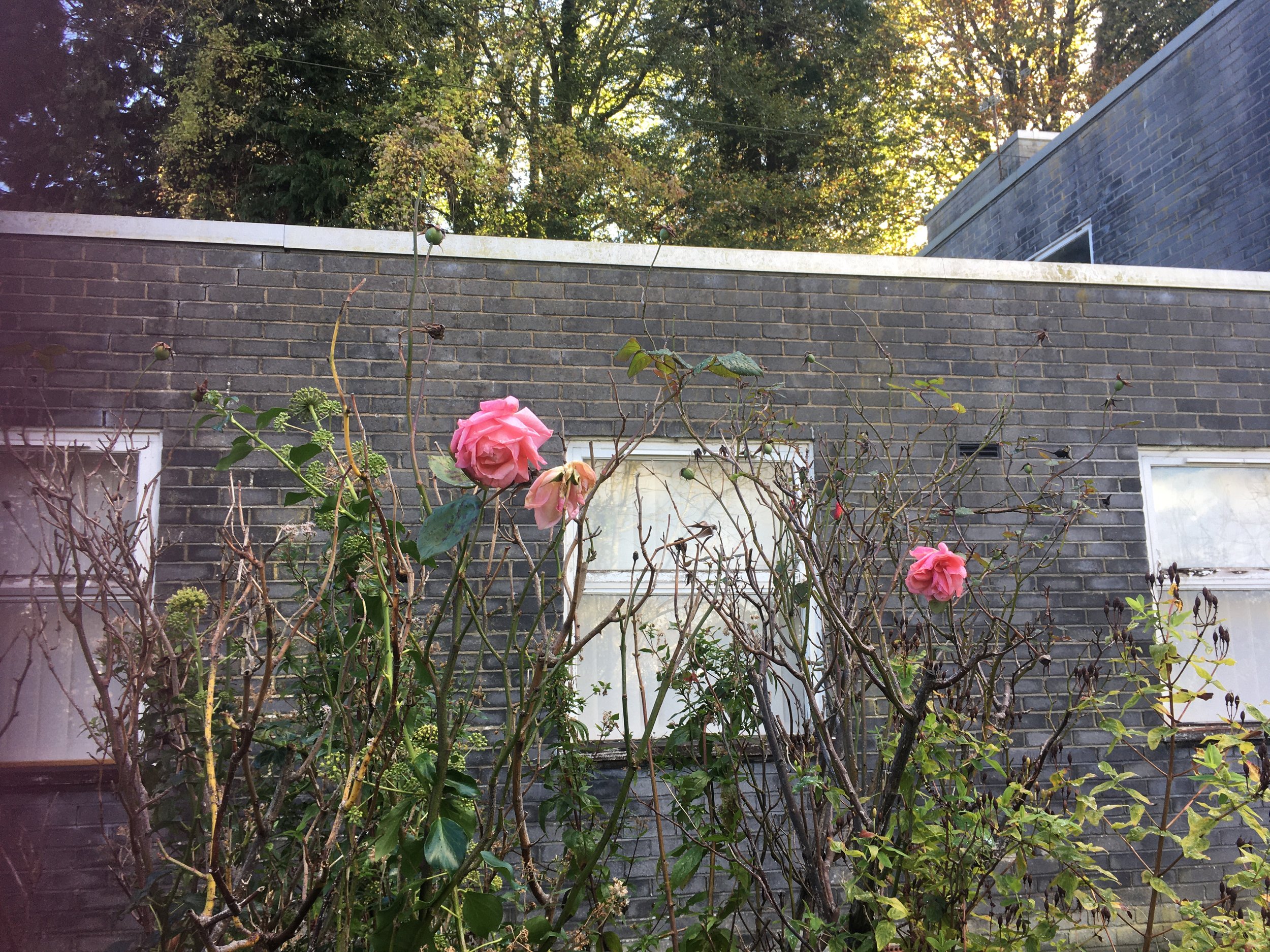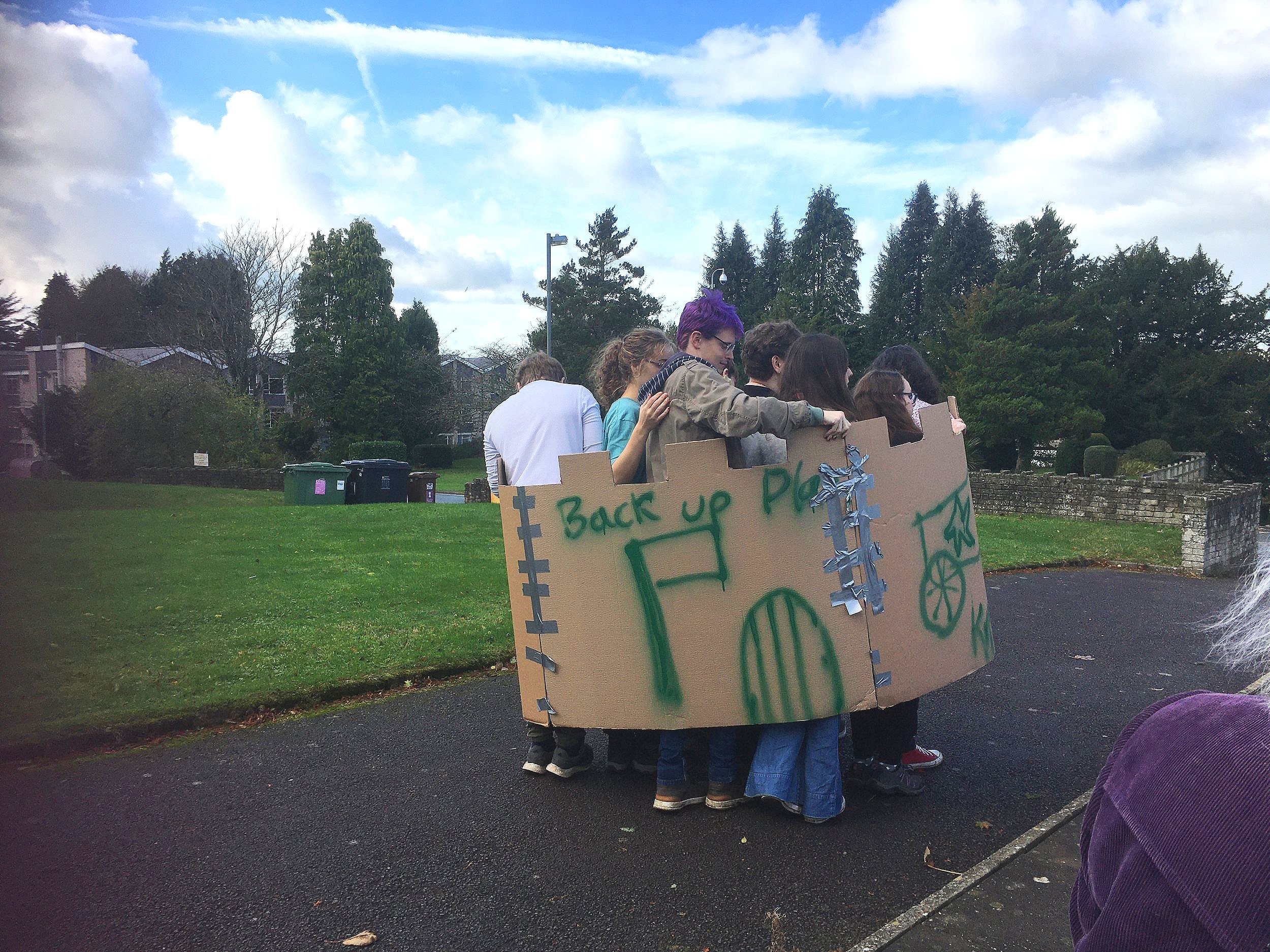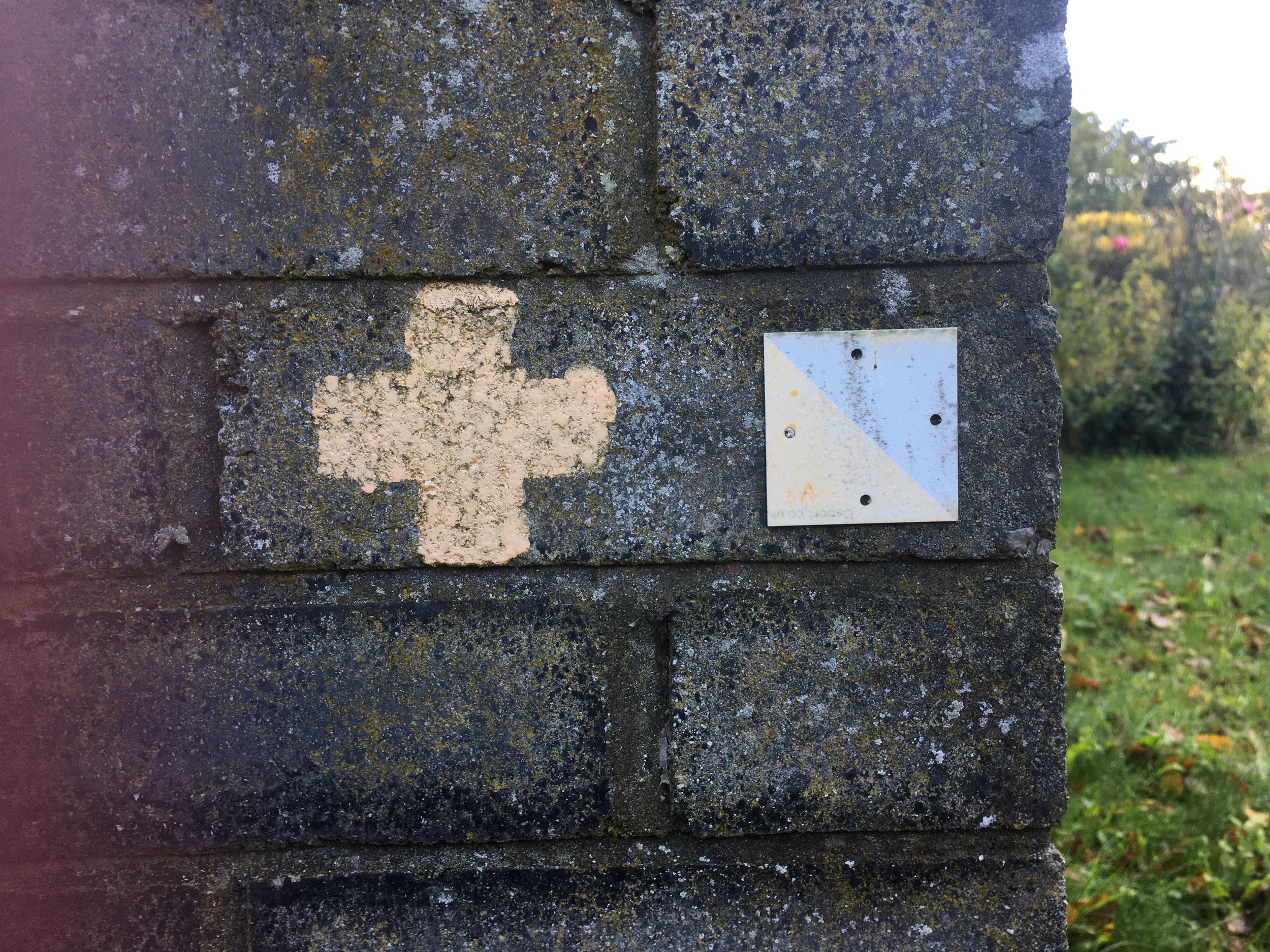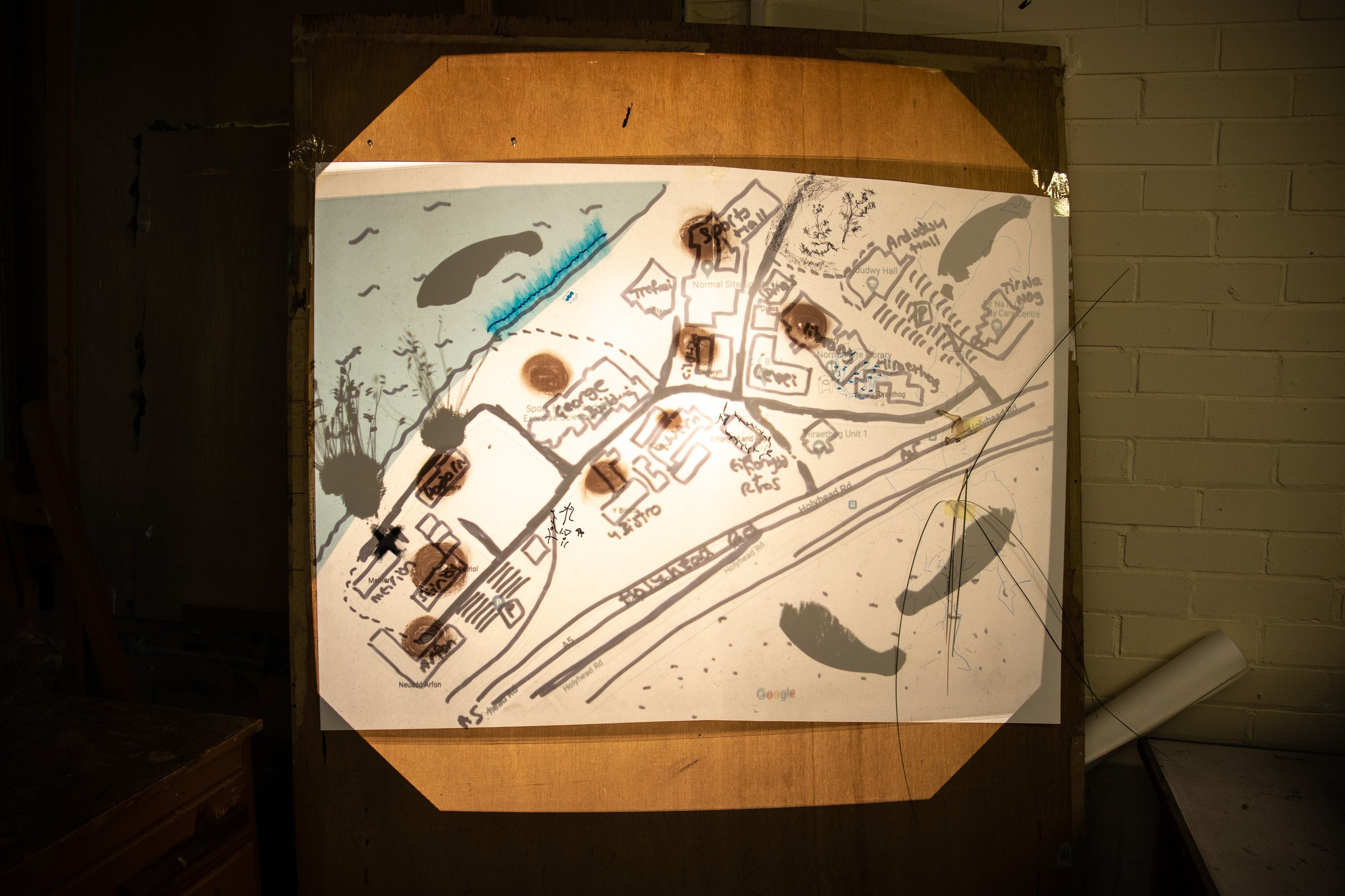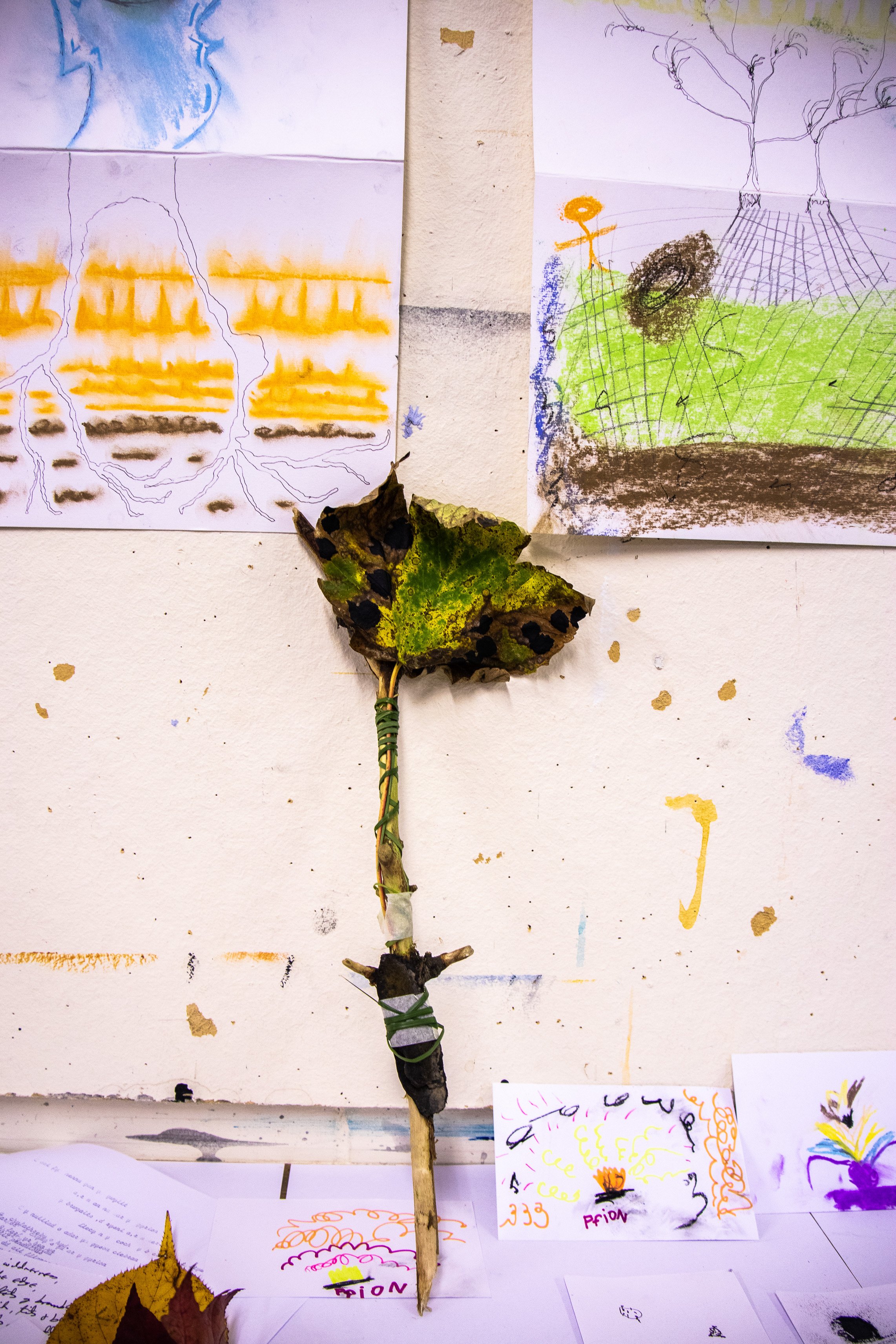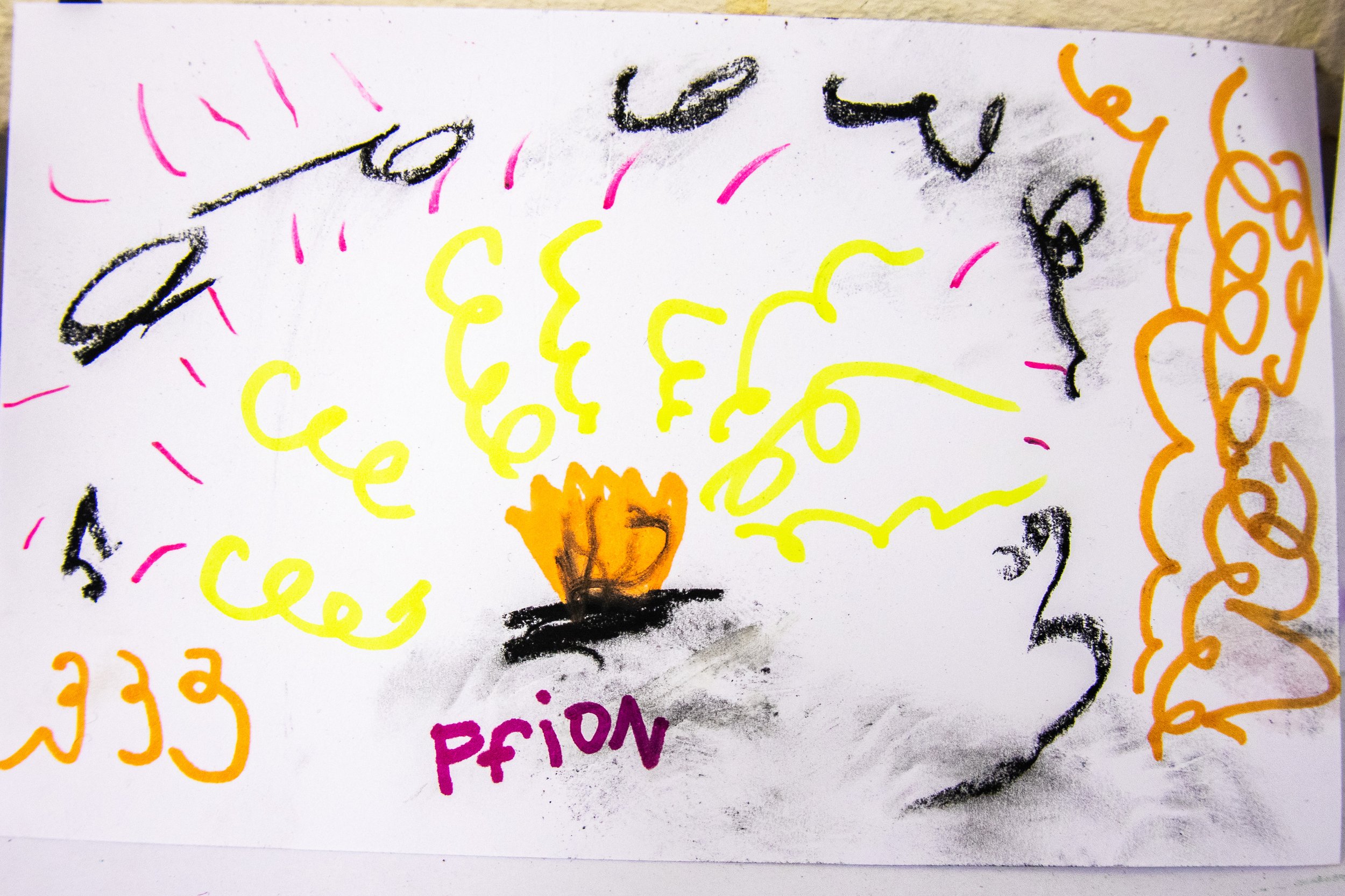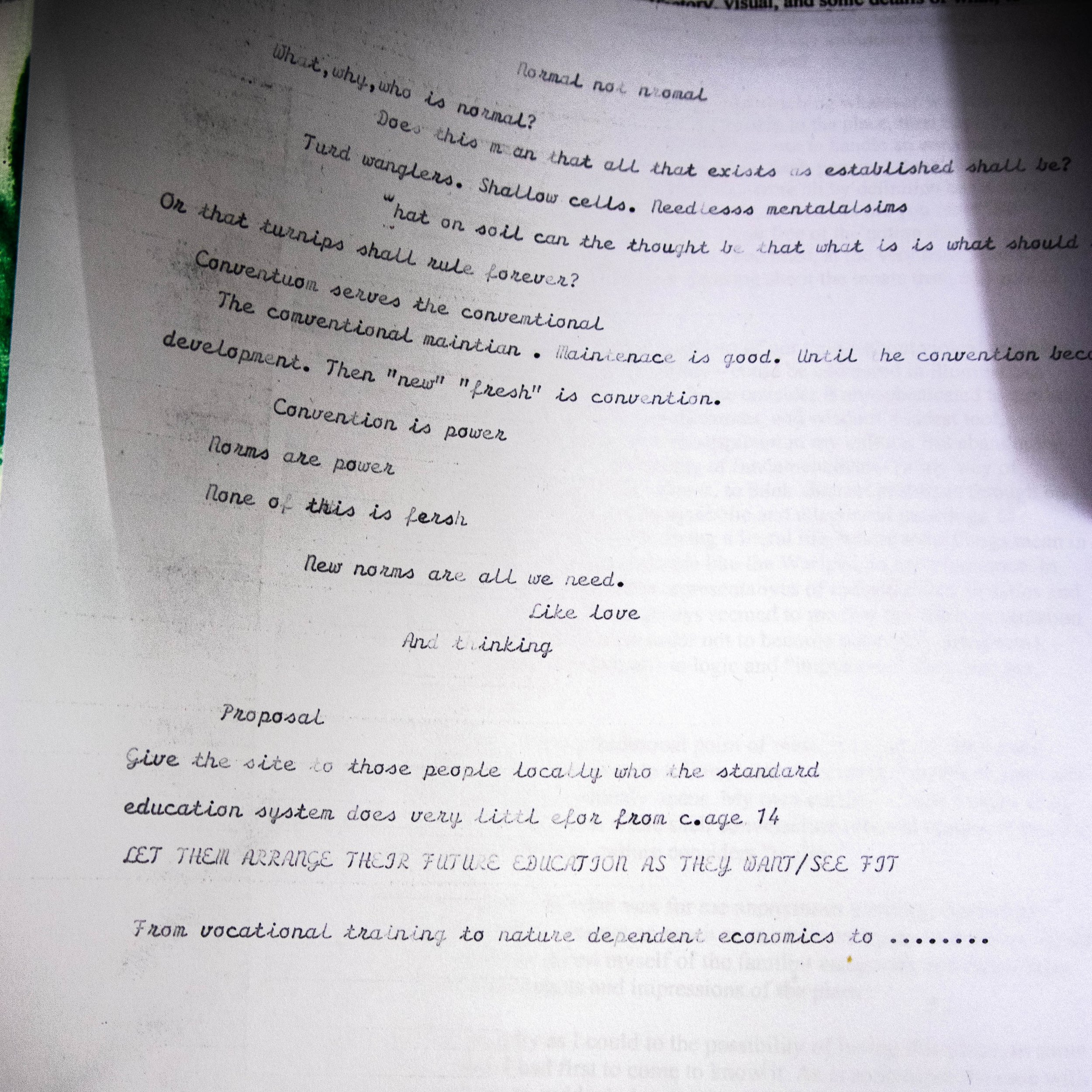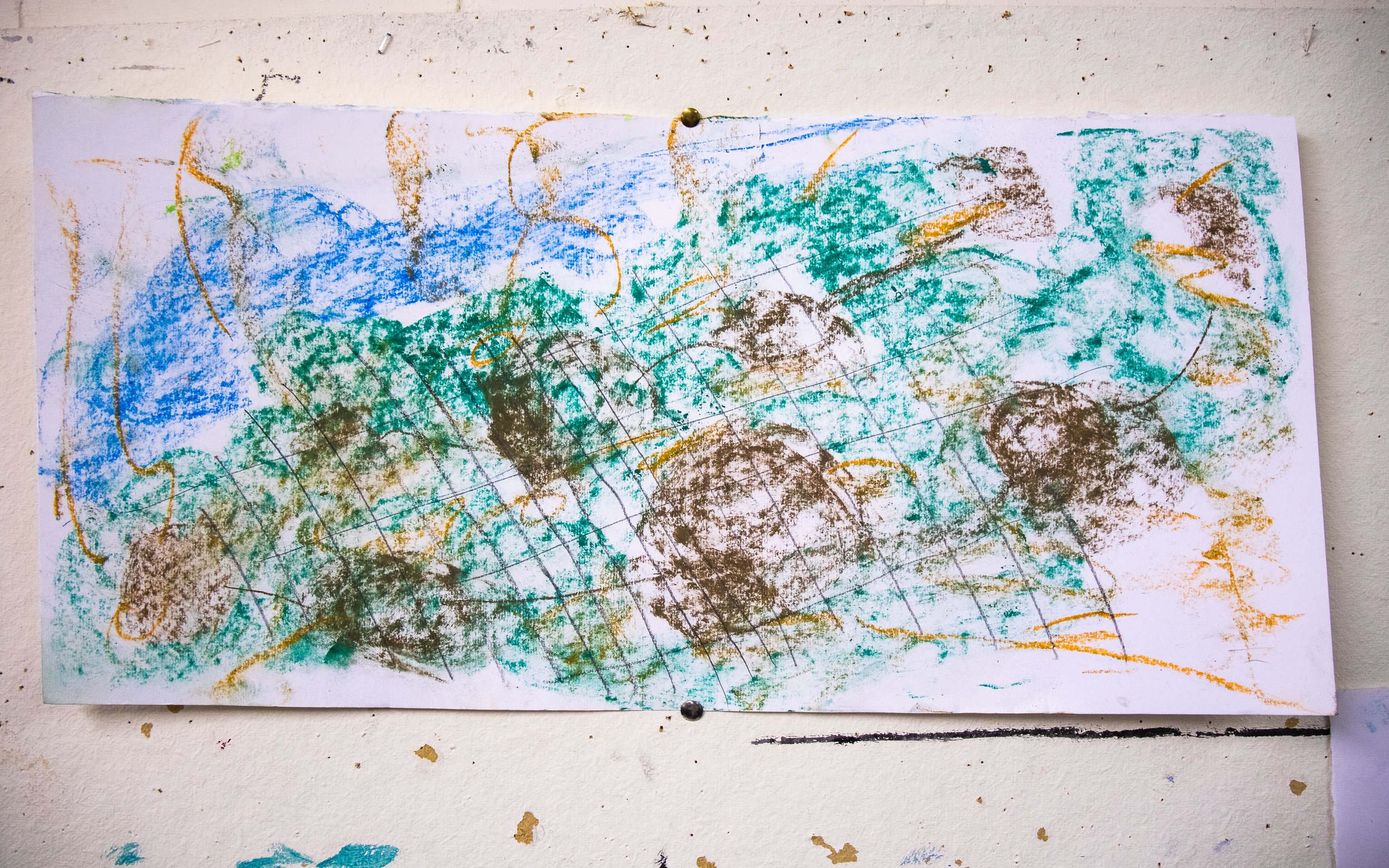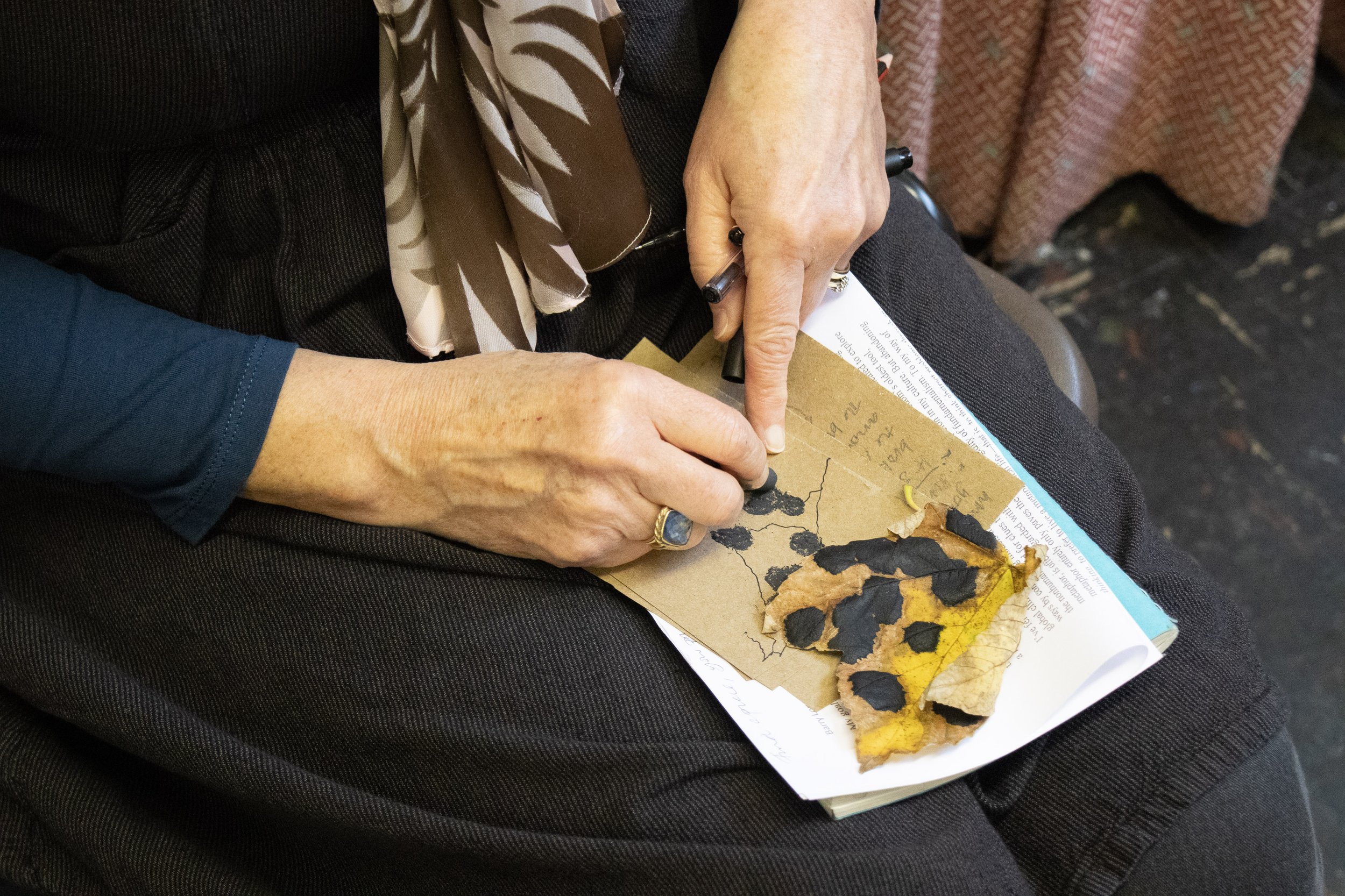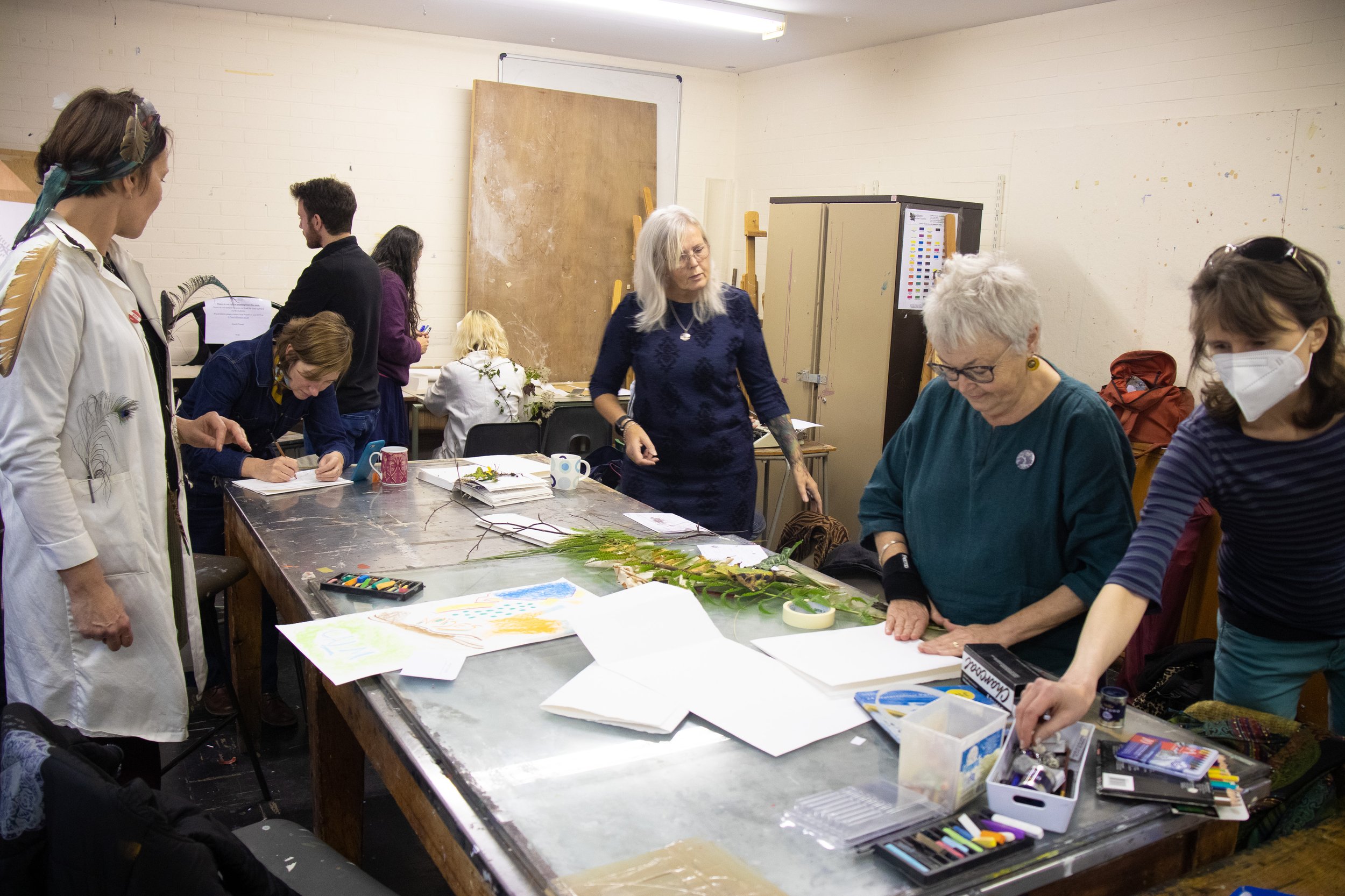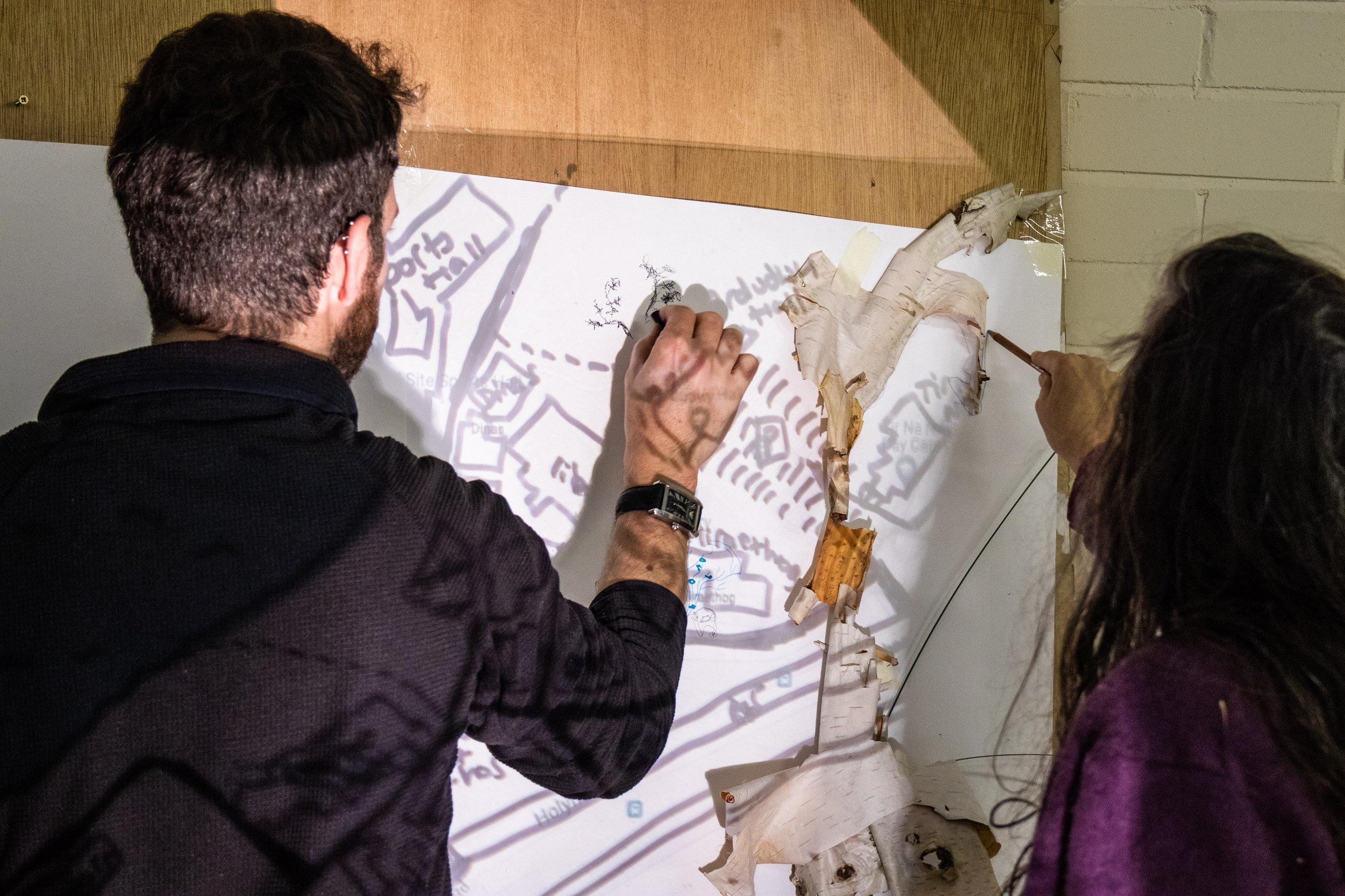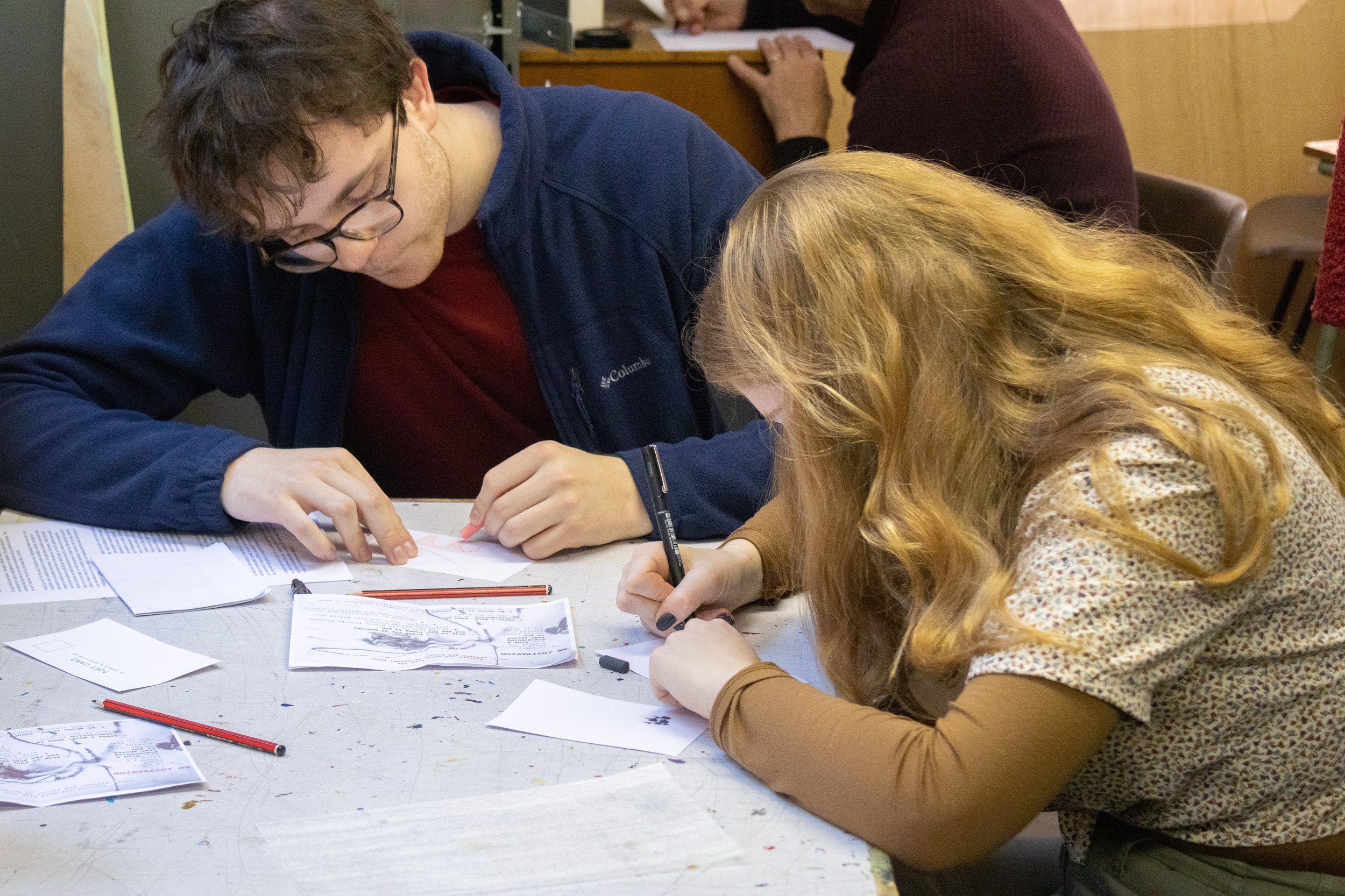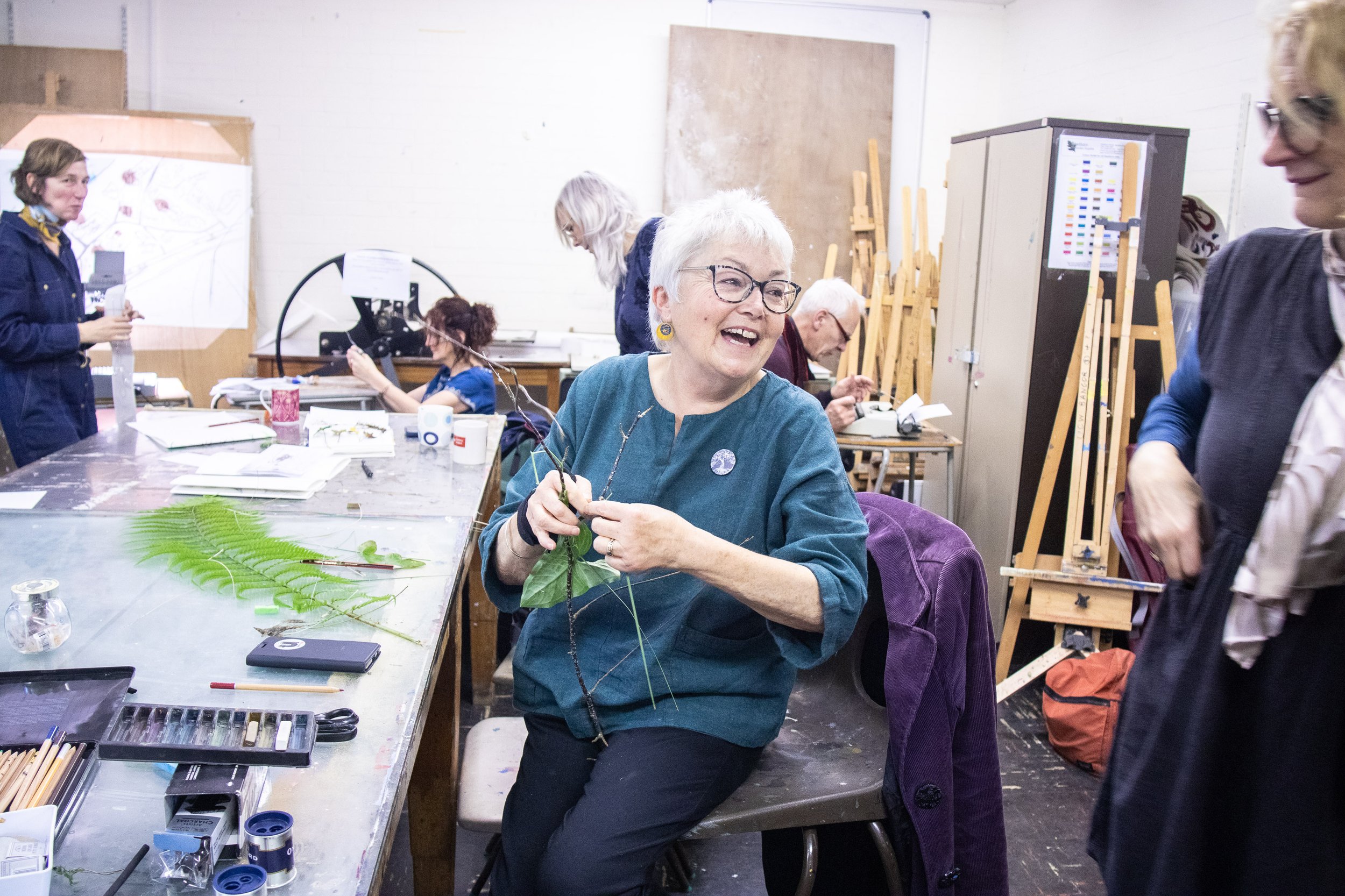
Maniffesto o Le / Manifesto of Place
Fel rhan o’r ŵyl Bod yn Ddynol, cynhaliom Collaboratory (12.11.22) efo Hwb Bangor i ymgysylltu â’r asiantaethau hanes a rhyngrywogaethol cymhleth a ymgorfforir gan Adeilad George Prifysgol Bangor ar Gampws Safle’r Normal.
Daeth 23 o bobl i ail-ddychmygu Campws Safle’r Normal ar gyfer dyfodol mwy-na-dynol ac archwilio’n greadigol sut mae dynol a mwy-na-dynol yn torri drwodd i berthnasoedd newydd â lle. Fe wnaethom rannu ein cysylltiadau ein hunain â Safle’r Normal, ymyrryd yn greadigol â’i gyflwr presennol a mynegi ein gweledigaeth ar gyfer y dyfodol. Daethpwyd â’r holl gyfraniadau ynghyd i greu Maniffesto o Le.
As part of the Being Human festival, we ran a Collaboratory (12.11.22) with Hwb Bangor to engage with the complex history and inter-species agencies embodied by Bangor University’s George Building at Normal Site Campus.
23 people came to re-imagine Normal Site Campus for a more-than-human future and creatively explore how human and more-than-human people break through to new relationships with place. We humans and more-than-humans shared our own connections with Normal Site, intervened creatively with its current state of being and expressed our visions for the future. All contributions were brought together to create a Manifesto of Place.
Chwaraewch wrth ddarllen ein Maniffesto isod. Please play while reading our Manifesto below.
Manifesto of Place:
Normal Site, Bangor University
This is a proposal that ends with a question
“What a responsibility we have to our children for the future”
WE SEEK…
1.To keep ‘normal site’ for education, creating a space of learning in a different way.
Creating communities that are educationally grown
Reflecting how eDucation has to change for the future
Moving away from the formal education System and its academic focus
From here you don’t go out with a first class degree judged bY someone else,
you go out with a life skill that you have created by working together with others.
2. To let it evolve as young people bring their ideas, to create the world they want in microcosm.
Let them bring young ideas and life and laughter back again.
Give this site to Young people that have not had the benefits of the standard education systeM:
You say ‘ok there you are, it’s a changing world, how would you set this up and run it so that your group (the 15% which the current education system largely completely fails from the age of 14 onwards) can learn what you want to learn
3. To learn from nature, and relationships based on reciprocity.
This community of learning will be self sufficIent.
The site is moStly green and the buildings are part of the earth
Students learning agriculture will grow everything that the cookery students cOok. The engineering school will create the buildings, the drama and music students will create the entertainment
5. To replace solo learning with community learning.
This place of learning isn’t separate to the world outside it, it is multiculTural
It is integrated cross sector learning, cross disciplines, bringing together farmers and conservationists, people from overseas.
The food Grown is available to those outside the community through the market gardens
People come in to enjoy the entertainment, youngsters play on the water, tourists are involved.
And from here youngsters learn how to create a community and go out and found a dIfferent community somewhere else.
5. To be governed by a flat hierarchy
We propose the students and all the more-than-humans of Normal Site to be the new Vice Chancellor
Will oUr first step be to pin our manifesto to the door of the current Vice Chancellor?
* DYSGU - to learn AND to teach
* SYMBIOTIC - involving interaction between two different organisms living in close physical association, a mutually beneficial relationship between different people or groups.
Creu ein Maniffesto/ Creating our Manifesto
Participants: Lisa, Wanda, Lindsey, Ed, Odette, Craig, Emily, Siân, Mary, Sue, Alex, Hazwani, Julie, Jonathan, Nesta, Ffion, Lin, Karine, Sarah, Audrey, Carys, Irene, Steph.
After a panad and a bit of context (we read from Barry Lopez, love in a time of terror, see below) and discussed the history of Normal Site, we took up the invitation above to explore and meld with the past, present and future of normal site and all its beings…
Our explorations included:
Sit with your back to the tree, try to see what the tree wants.
Sit under an oak tree and draw where the sticks have fallen.
Rub the bark of a tree and draw the branches. Turn the lines into music.
Notice the tiny moss and teeny red flowers on the wall, a microcosm in the macrocosm.
Look out through the different layers, the man made layers of a wall and a fence, to the sky framing it and the birds flying around
Find yourself in between places – between a broken window high up in a building and on the ground.
Fall through the portal of black spots on the leaves and become one with the soil
Notice the fluidity of the place, follow the natural flow of the land, take a meander like a stream, flowing down to the beach.
Look out over the beach and the sea, and think of home.
Listen
Allow yourself to be drawn to discarded bits of human-ness, the forgotten bits that bring you back,
combining with lichen and moss and everything that the sea and land strives to reclaim, the material deposited in it
Delicately weave a piece of your hair into the web of a spider as a gift
Watch the students struggle around Normal Site within their ‘Plan B’ cardboard castle.
On return, we used text, the typewriter, the music box, drawing materials, exquisite corps to explore what we’d learnt… and then presented back the results…
Creating our Manifesto
Barry Lopez – love in a time of terror
“My goal that day was intimacy—the tactile, olfactory, visual, and sonic details of what, to most people in my culture, would appear to be a wasteland. This simple technique of awareness had long been my way to open a conversation with any unfamiliar landscape. Who are you? I would ask. How do I say your name? May I sit down?
Should I go now? Over the years I’d found this way of approaching whatever was new to me consistently useful: establish mutual trust, become vulnerable to the place, then hope for some reciprocity and perhaps even intimacy. You might choose to handle an encounter with a stranger you wanted to get to know better in the same way. Each person, I think, finds their own way into an unknown world like this spinifex plain; we’re all by definition naive about the new, but unless you intend to end up alone in your life, it seems to me you must find some way in a new place—or with a new person—to break free of the notion that you can be certain of what or whom you’ve actually encountered. You must, at the very least, establish a truce with realities not your own, whether you’re speaking about the innate truth and aura of a landscape or a person.
I’ve felt for a long time that the great political questions of our time—about violent prejudice, global climate change, venal greed, fear of the Other—could be addressed in illuminating ways by considering models in the natural world. Some consider it unsophisticated to explore the nonhuman world for clues to solving human dilemmas, and wisdom’s oldest tool, metaphor, is often regarded with wariness, or even suspicion in my culture. But abandoning metaphor entirely only paves the way to the rigidity of fundamentalism. To my way of thinking, to prefer to live a metaphorical life—that is, to think abstract problems through on several planes at the same time, to stay alert for symbolic and allegorical meanings, to appreciate the utility of nuance—as opposed to living a literal life, where most things mean in only one way, is the norm among traditional people like the Warlpiri, in my experience. In listening to negotiations, for example, between representatives of industrialized societies and representatives of traditional societies, it has always seemed to me that the latter presentation is meant to be more open to interpretation (in order not to become trapped in literalness), while the former presentation too often defaults to logic and “impressive” data sets, but, again, perhaps this is only me.
The goal in these conversations, from a traditional point of view, is to put off for a good while arriving at any conclusion, to continue to follow, instead, several avenues of approach until a door no one had initially seen suddenly opens. My own culture—I don’t mean to be overly critical here—tends to assume that while such conversations should remain respectful, the outcome had to conform to what my culture considers “reality.”
My point here is that walking off into what was for me anonymous territory, one winter afternoon in north-central Australia, was not so much an exercise in trying to improve myself as a naturalist as it was an effort to divest myself of the familiar categories and hierarchies that otherwise might guide my thoughts and impressions of the place.
I wanted to open myself up as fully as I could to the possibility of loving this place, in some way; but to approach that goal, I had first to come to know it. As is sometimes the case with other types of aquaintanceships, to suddenly love without really knowing is to opt for romance, not commitment and obligation.”
